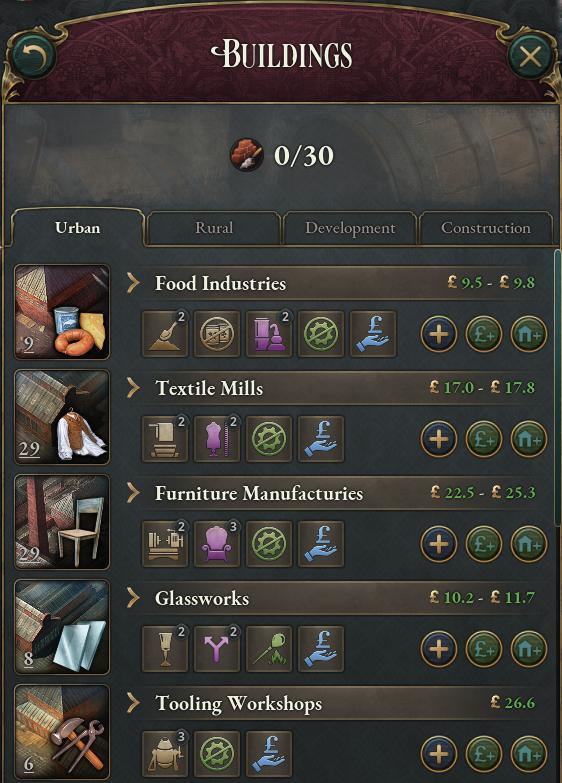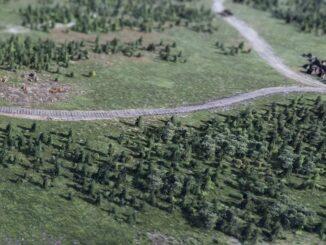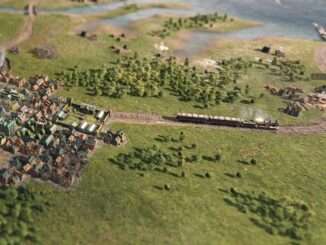
Production Methods
Production methods determine the functions of the building, its inputs and outputs, and what employee types it requires to operate.
In Victoria 3 there are no actions without reactions, and novel innovations don’t just make buildings better with no side effects. Improving industrial processes over time is to be expected, but in some cases those improvements might require goods as input that the country has scant access to, while others permit the output of a new type of end product at the expense of the old one. As a result, buildings in Victoria 3 require more flexible upgrade paths and are not a permanent, linear, “no-brainer” improvements.
The buildings panel provides a detailed summary of the buildings in the player’s country and their associated production methods.

Production Methods Types
All buildings have several categories of production methods, usually between 2 and 5. Only one is active at any given time in each category.
Most categories fall into one of these types:
- Base – Governs the general “tech level” and efficiency of the building, produces goods typical for the building type.
- Refining – Reduces output of typical goods in favor of output of specialized or luxury goods, sometimes adding a special input.
- Automation – Adds industrial goods as input to reduce the building’s unskilled workforce requirement.
- Ownership – Determines who owns shares in the building; typically governed by laws.
Iron Mine Examples
Taking the iron mine building as an example it is possible to review how the different production methods differ:
- Base production method – Determines if miners use only picks and shovels or if they also use some sort of engine-driven pumping mechanism. There are several different pumping technologies which also determine what fuel is used. The more advanced the pumping mechanism the more deposits can be accessed and the faster iron can be mined, but the more coal or oil is used in the process. With higher tech pumps comes a requirement for more engineers and machinists to be on-site to control and oversee its operation. This creates more demand for qualified workers and also opens up a number of better paid positions to those pops who meet the qualifications.
- Secondary production method (used only in mines) – The revolution in chemical sciences of the era also enabled the use of explosives in mining. Once Nitroglycerin is invented, it can be used in mines to generate even more minerals at the expense of explosives produced by the chemical industry. Doing so, however, also leads to a higher rate of workplace accidents. By researching less volatile dynamite, even more minerals are extracted at the expense of even more explosives, with the additional benefit that far fewer workers will blow themselves up on the job.
- Automation production method – Once invented, portable steam donkey engines can be deployed at mining sites to drastically reduce the amount of manual labor required just for hauling. This costs the building some money in the form of coal and engines, but reduces the amount of money they have to pay in wages. Perhaps more importantly it frees those laborers up to do other work in other buildings if the state is running low on workers. It is important to note though that if wages are already very depressed it might not be a great idea to purchase expensive industrial goods just to increase the unqualified labor pool further.
- Ownership production method – In most countries, simple mines are owned and operated by merchant guilds at the game start. These are small-time purveyors of the goods produced represented by shopkeepers. Once mines start to industrialize, capitalists will step in to take over ownership. In most cases, these capitalists will come from shopkeepers promoted to these newly created positions, but some might come from other pops in the state, even other capitalists in buildings not quite as lucrative as these new mines. Though there are fewer capitalists they draw a higher wage than shopkeepers and, more importantly, they will reinvest some of their earnings into the country’s expanding industry depending on how much profit their workplace is generating for them. As new ideas spread across your society you might be able to make the mining industry publicly traded instead of privately held, and later on in the game perhaps even nationalize them to be run by government bureaucrats or turn them into cooperatives where profit is split between workers.
Managing Production Methods
To ease the management of all the different buildings (and their associated production methods) in the country the player can refer to the buildings panel.
The panel provides a birds-eye view of all industries in the country and see at a glance how they’re doing financially. The buildings are organized by major and minor type and can be broken down further to view the individual building in each state with the possibility of clicking on one to get an in-depth view of its balance sheet and workforce. In addition, the panel allows adjusting the production methods of an individual building or set all production methods for a certain building type to a specific setting all across the country.
Predictive tooltips will explain the anticipated impact on the building’s balance as a result of changes in production, consumption, and wage requirements, as well as the changes in employment (which new job positions will be created and which will disappear) that could also impact the country’s politics over time. A warning will be provided if there aren’t enough qualifying pops to take on any new professions created, as this could limit the industry’s effectiveness.
Societal Effects
Production methods aren’t limited to consuming and producing goods. Government administrations employ bureaucrats and clerks who use paper to produce bureaucracy, one of the game’s capacities that allows governing more people and extend more state services to them. Railways consume engines and a fuel (such as coal) to produce both transportation and infrastructure, the former which is sold on the market and the latter which allows the state to support more buildings without loss of market access. Universities employ academics that let the state guide research and development of new technologies and ideas. Virtually any kind of currency, modifier, or effect can be produced by production methods in buildings and can be applied in a variety of ways to the country, state, or even the building itself.
While it may on the surface seem obvious to just enable the production methods that make the buildings more profitable, the player should keep in mind the societal effects those production methods may inadvertently cause. There are different questions one may need to ask when choosing one production method over the other.
An example to some of those questions may be:
- Are there enough pops in the state that qualify for the more advanced jobs a new process requires?
- Will the wage for these new jobs be sufficient to entice those pops to switch professions?
- Will doing so inadvertently create a whole new class of well-to-do machinists that may have pro-labor union sentiments?
- Will the increased profits not lead to higher wages in the building because they’re already competitive and fully employed?
- Will it simply result in more dividends for the shareholders which will be funneled into increased luxury consumption?
- Will you be able to supply those luxuries yourself rather than needing to import them and thus benefiting your rival?
- And so on…
Which way is chosen might depend on the population’s social mobility, what politics are favored in the country (a socialist uprising may not be a desired outcome) and whether in the end foreign powers will benefit from those choices more the the player’s nation. More profitable domestic industries are never bad, but should be far from the only consideration when building a society.





Be the first to comment